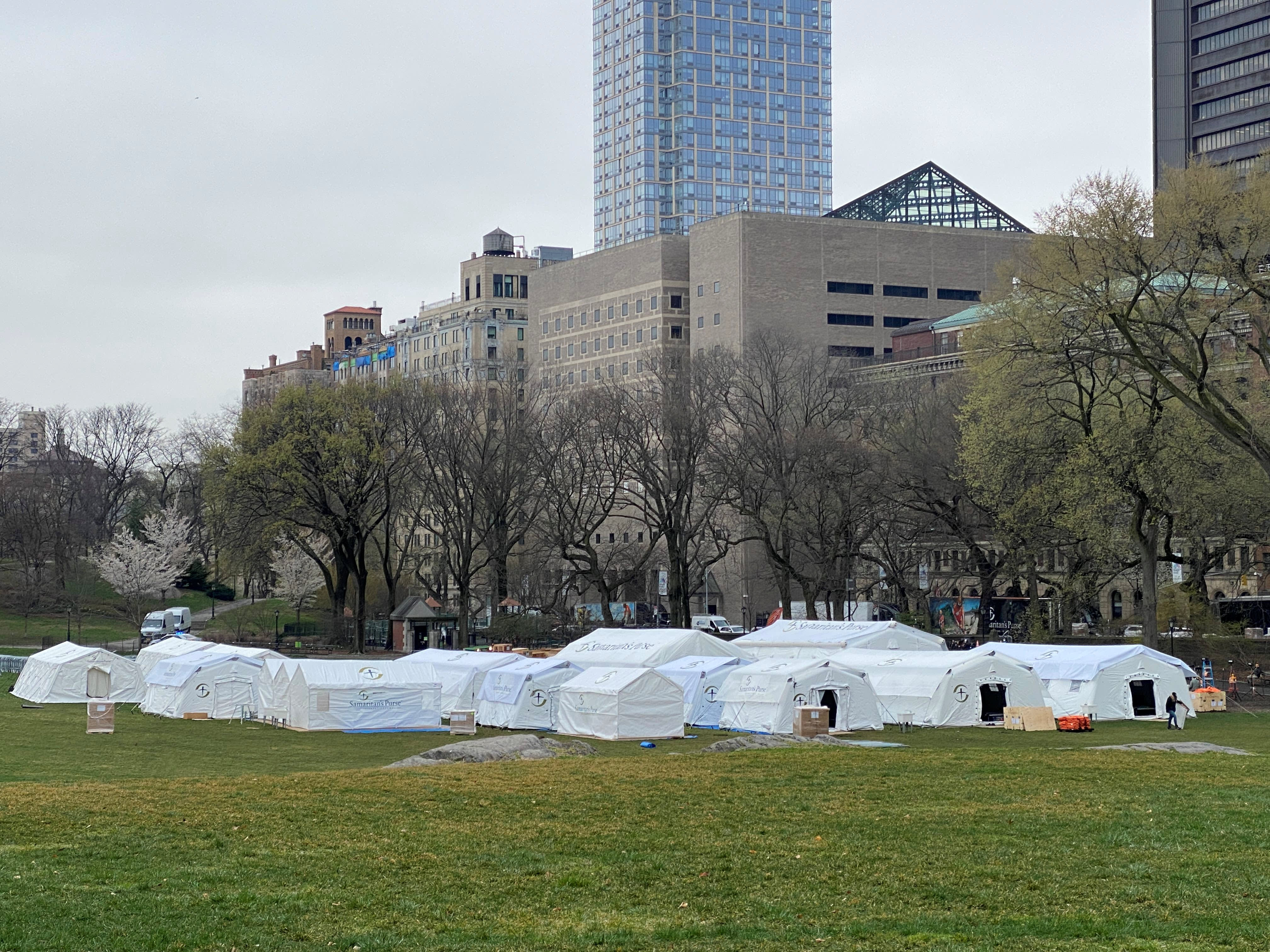A field hospital is set up by Samaritan’s Purse, a Christian humanitarian aid organization, and FEMA at the East Meadow in Central Park amid a coronavirus disease (COVID-19) outbreak in New York City, U.S., March 30, 2020.
Aleksandra Michalska | Reuters
Fourteen white tents opened for business in New York’s famed Central Park this week to treat COVID-19 patients.
More than half of the Empire State’s coronavirus cases are in New York City, according to the state’s coronavirus site.
The new 68-bed facility is run by Mt. Sinai Hospital, which is located directly across the street from the tents in Central Park. Samaritan’s Purse, an evangelical Christian disaster-relief organization run by Franklin Graham, son of the late Billy Graham, did the construction and is providing staff.
Samaritan’s Purse usually provides aid in the wake of hurricanes and similar U.S. disasters, according to an NBC News report. Dr. Elliott Tenpenny, the organization’s director of international health, told NBC News it hasn’t previously worked in a medical capacity within the country’s borders.
“It’s kind of surreal to see a field hospital sitting in the middle of Central Park,” said Shelly Kelly, a nurse practitioner who came to New York from Tulsa, Oklahoma, to work with the organization.
The facility is not the city’s only field hospital, but other locations hosting medical pop-ups — including the Javits Convention Center and the Brooklyn Cruise Terminal — may be new to the game. Central Park is not.
More from Personal Finance:
Answers to your questions about coronavirus stimulus checks
Unemployment benefits stalled by confusion, delays
Which bills to pay during the coronavirus pandemic
‘Well-managed institution’
In 1862, the United States General Hospital, Central Park, was established just a few blocks north of the current one.
Like the current hospital, this was built by an organization with a religious affiliation: the Sisters of Charity, a Roman Catholic order that provided nursing staff and originally named it St. Joseph’s Military Hospital.
New York draft rioters in 1863 threatened to set fire to the hospital, but the Sisters of Charity refused to leave their patients. The fire was never set.
Walt Whitman visited in November 1864 and said it seemed “to be a well-managed institution.” This wasn’t his experience at the Brooklyn Hospital on Raymond Street, which he called “a bad place for soldiers, or anybody else.” A typical Sunday dinner in Brooklyn, Whitman noted, was rice and molasses.
‘Afflicted the same as myself’
After the war, Pennsylvania native William Oland Bourne collected accounts by soldiers and sailors in the Central Park facility.
Since many veterans had lost limbs and needed to learn to write with the other hand, Bourne held a penmanship contest that attracted hundreds of letters from servicemen.
A typical one, by Union Sgt. Sextus Rop, reads, “With feelings of Esteem and Gratitude for the kindness and interest taken in the welfare of the sick and wounded in this hospital I contribute a line with the rest of my comrades.”
Sgt. William D. Phillips wrote in 1865 that he had been transferred to the hospital “where I am enjoying the society of many that are afflicted the same as myself.” He was in three battles, all in Virginia.
Private Orrin Hibbard enlisted in August 1862 in New Hampshire. “I was taken Sick the 11th of December 1862 and have been unfit for duty ever since, and I have been transferred from place to place and I am not any better now and I never Expect to regain my health again but I hope it is all for the best if it is so to be.”
Daniel Carpenter, with 124th New York Volunteers, who fought at Fredericksburg and Chancellorsville, wrote, “Such friendship near of kin to brotherhood, enduring through time, will run parallel with Eternity.”
